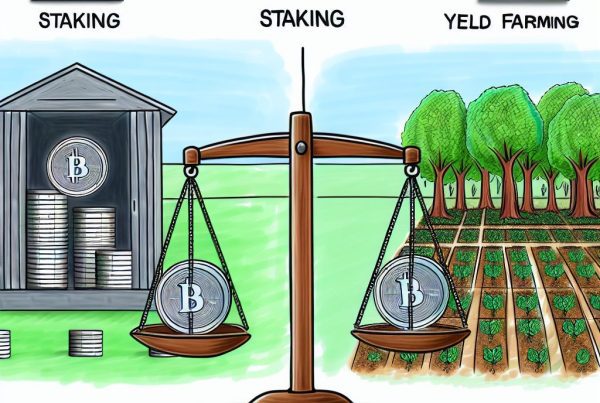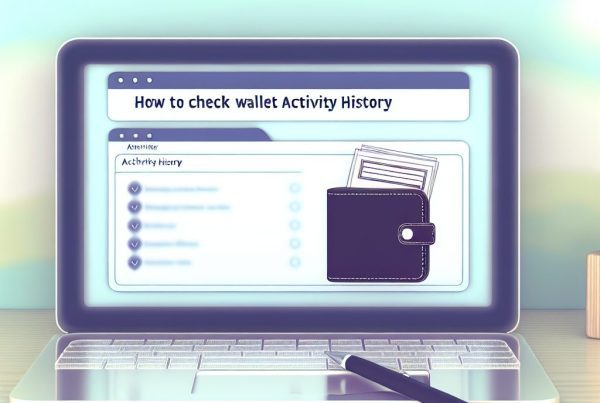Understanding Bridge Contracts in the Cryptocurrency Industry
The cryptocurrency landscape is constantly evolving, with new technologies and concepts emerging to address various challenges. One such concept that has gained traction is the bridge contract. This article delves into what bridge contracts are, their significance in the crypto ecosystem, and how they facilitate interoperability between different blockchain networks.
What Is a Bridge Contract?
A bridge contract is a smart contract designed to enable the transfer of assets and data between two distinct blockchain networks. These contracts act as intermediaries, allowing users to move tokens or information from one blockchain to another seamlessly. This is particularly important in a decentralized environment where multiple blockchains operate independently.
Bridge contracts are essential for enhancing the interoperability of blockchain networks, which is crucial for the growth and adoption of decentralized applications (dApps) and services. By facilitating cross-chain transactions, bridge contracts help to create a more connected and efficient blockchain ecosystem.
How Do Bridge Contracts Work?
Bridge contracts operate through a series of steps that ensure the secure transfer of assets between blockchains. Here’s a simplified breakdown of the process:
- Locking Assets: When a user wants to transfer assets from Blockchain A to Blockchain B, the bridge contract first locks the assets on Blockchain A.
- Minting Equivalent Assets: Once the assets are locked, the bridge contract mints an equivalent amount of tokens on Blockchain B. This ensures that the total supply of the asset remains constant across both blockchains.
- Transferring Assets: The user can now use the newly minted tokens on Blockchain B. These tokens represent the original assets locked on Blockchain A.
- Unlocking Assets: If the user wants to return to Blockchain A, they can burn the tokens on Blockchain B, prompting the bridge contract to unlock the original assets on Blockchain A.
This process ensures that assets are not duplicated and maintains the integrity of both blockchains involved in the transaction.
Types of Bridge Contracts
Bridge contracts can be categorized into several types based on their functionality and the blockchains they connect:

- Centralized Bridges: These bridges are managed by a central authority or organization. They offer faster transactions but come with increased risks related to trust and security.
- Decentralized Bridges: Operated by smart contracts, decentralized bridges eliminate the need for a central authority. They are generally considered more secure but may have slower transaction times due to network congestion.
- Trustless Bridges: These bridges utilize cryptographic proofs to ensure that transactions are secure without relying on a central authority. They are designed to minimize trust issues and enhance security.
- Wrapped Tokens: This method involves creating a token on one blockchain that represents an asset from another blockchain. For example, Wrapped Bitcoin (WBTC) is an ERC-20 token that represents Bitcoin on the Ethereum network.
Benefits of Bridge Contracts
Bridge contracts offer several advantages that contribute to their growing popularity in the cryptocurrency space:
- Interoperability: They enable different blockchains to communicate and interact, fostering a more integrated ecosystem.
- Increased Liquidity: By allowing assets to move freely between blockchains, bridge contracts enhance liquidity, making it easier for users to trade and utilize their assets.
- Diverse Use Cases: They open up new possibilities for decentralized applications, allowing developers to leverage the strengths of multiple blockchains.
- Cost Efficiency: Users can take advantage of lower transaction fees on one blockchain while utilizing the features of another.
Challenges and Risks Associated with Bridge Contracts
Despite their benefits, bridge contracts also come with certain challenges and risks:
- Security Vulnerabilities: Smart contracts are susceptible to bugs and exploits, which can lead to significant financial losses.
- Centralization Risks: Centralized bridges may pose risks related to trust and control, as users must rely on the managing entity.
- Complexity: The technical complexity of bridge contracts can be a barrier for some users, particularly those who are new to cryptocurrency.
- Regulatory Concerns: As the regulatory landscape evolves, bridge contracts may face scrutiny, impacting their operation and adoption.
Real-World Applications of Bridge Contracts
Bridge contracts have been implemented in various projects within the cryptocurrency industry, showcasing their potential and versatility. Here are a few notable examples:
- Polygon (MATIC): Polygon has developed a bridge that allows users to transfer assets between Ethereum and its Layer 2 scaling solution. This bridge enhances transaction speeds and reduces costs for users.
- Binance Smart Chain (BSC): BSC offers a bridge that enables users to move assets between Ethereum and Binance Smart Chain, facilitating cross-chain transactions and increasing liquidity.
- Thorchain (RUNE): Thorchain is a decentralized liquidity network that allows users to swap assets across different blockchains without relying on centralized exchanges. Its bridge contracts enable seamless asset transfers.
Statistics on Bridge Contracts
The adoption of bridge contracts has been on the rise, reflecting their growing importance in the cryptocurrency ecosystem. Here are some statistics that highlight this trend:
- As of 2025, the total value locked (TVL) in cross-chain bridges has surpassed $10 billion, indicating a significant increase in user interest and investment.
- Over 50% of decentralized finance (DeFi) transactions involve cross-chain interactions, showcasing the necessity of bridge contracts in the DeFi space.
- The number of active bridge contracts has grown by over 200% in the past year, demonstrating the rapid development and implementation of this technology.
Frequently Asked Questions (FAQs)
What is the primary purpose of a bridge contract?
The primary purpose of a bridge contract is to facilitate the transfer of assets and data between different blockchain networks, enhancing interoperability and liquidity.
Are bridge contracts secure?
While bridge contracts offer significant benefits, they are not without risks. Security vulnerabilities in smart contracts can lead to exploits, so users should conduct thorough research before using any bridge.
Can I use bridge contracts for any cryptocurrency?
Bridge contracts are typically designed for specific cryptocurrencies and blockchains. Users should check if their desired assets are supported by the bridge they intend to use.
What are wrapped tokens?
Wrapped tokens are assets from one blockchain that are represented as tokens on another blockchain. For example, Wrapped Bitcoin (WBTC) is an ERC-20 token that represents Bitcoin on the Ethereum network.
How do I choose a bridge contract?
When choosing a bridge contract, consider factors such as security, fees, supported assets, and user reviews. It’s essential to select a reputable bridge to minimize risks.
Conclusion
Bridge contracts play a crucial role in the cryptocurrency ecosystem by enabling interoperability between different blockchain networks. They facilitate the seamless transfer of assets and data, enhancing liquidity and opening up new possibilities for decentralized applications. While they offer numerous benefits, users must also be aware of the associated risks and challenges.
As the cryptocurrency industry continues to evolve, bridge contracts will likely become even more integral to the development of a connected and efficient blockchain ecosystem. For the latest news and updates on cryptocurrency, consider visiting Bitrabo.
For more insights and discussions on cryptocurrency, feel free to follow me on X, Instagram, and Threads.
Disclaimer: The information provided in this article is for informational purposes only and should not be considered financial advice. Always conduct your own research before making investment decisions.
The Crypto Watchlist of the Week 🔎
Subscribe to receive expert-curated projects with real potential—plus trends, risks, and insights that matter. Get handpicked crypto projects, deep analysis & market updates delivered to you.


